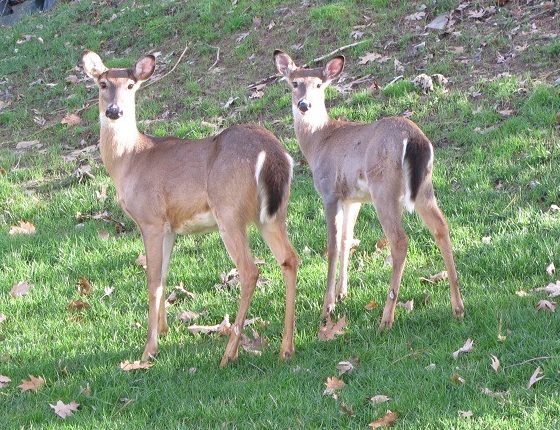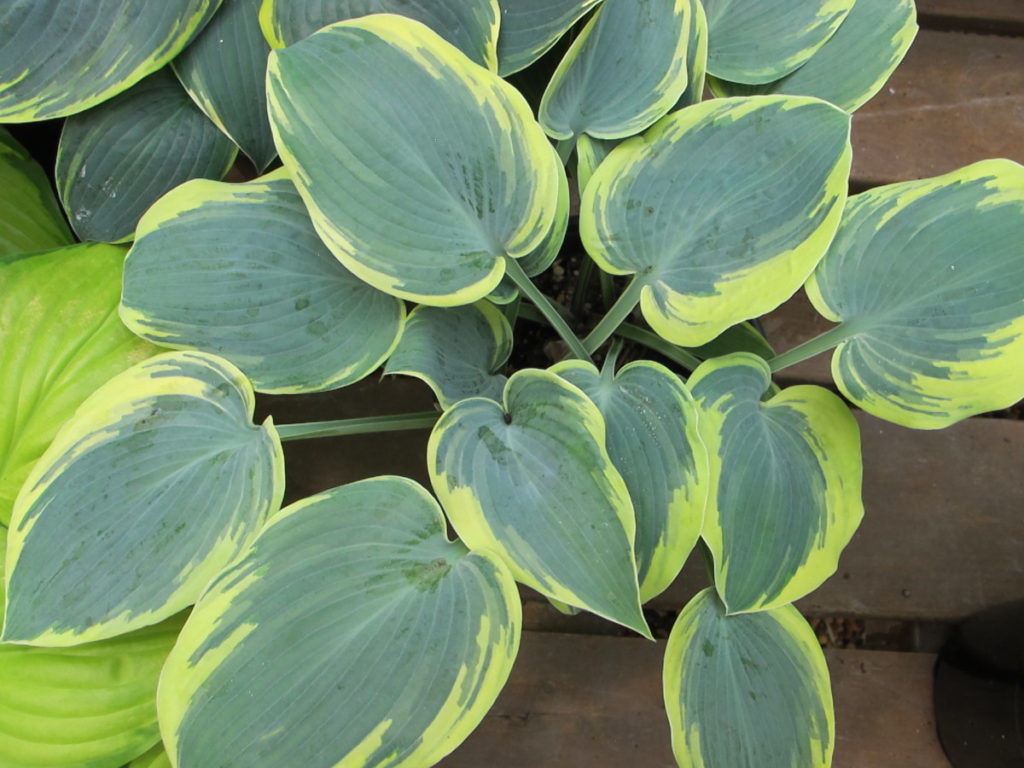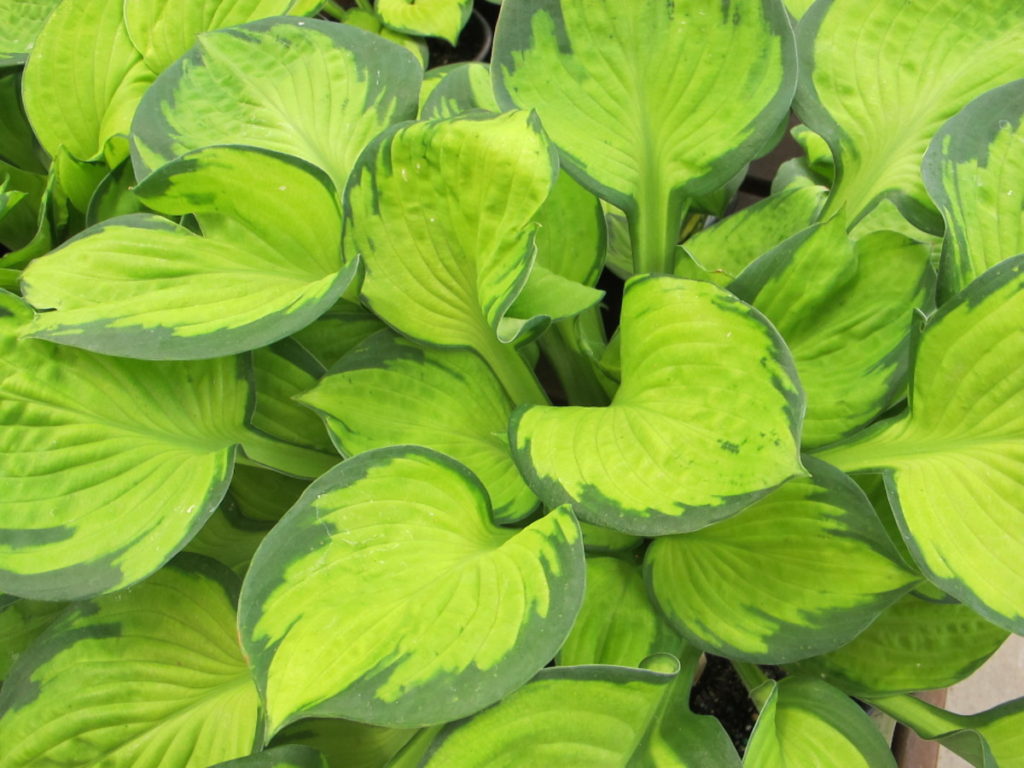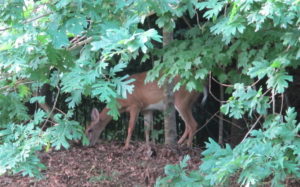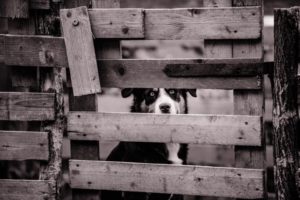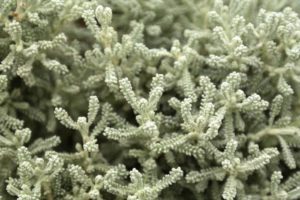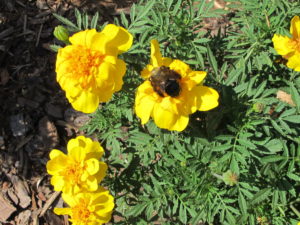Page 2
Deer Repellents
Sprays and Tablets
Repellex
I often used solutions composed of extremely bitter compounds, such as Repellex. For a few years, I planted Repellex tablets in my yard and in customers’ gardens.
The tablets were placed an inch or two into the ground, above the root systems of susceptible plants. Roots absorbed the active ingredient as the tablets slowly dissolved, and the bitter compound was translocated to all parts of the plant through the sap. Whether the animals could smell the chemical or the first bite was so distasteful that they decided against a second helping, I didn’t need to reapply any repellent for years. It worked beautifully!
- Hostas: deer bait!
Although the tablets were supposed to last 2 years, the ones around the hostas were effective for about 4 years. This long-term protection could have been due to the plants’ small size. I used 4 tablets around each hosta, and immediately sprayed the foliage with Repellex solution to protect the plants until the tablets had taken effect.
After a couple of hours planting Repellex tablets, I could taste the Bittrex, the active ingredient. Somewhere I had read that the antidote was dark chocolate and white bread…really! So that chocolate éclair from Montgomery Donuts was a good idea. Perfect…and it worked!
More Spray Repellents
Other products include Bobbex, Hinder, Liquid Fence, Plantskydd, Deer Stopper, Deer Away, Deer Off, and I Love My Garden sprays. Some will have garlic, red pepper, lavender, and other herbs. Some smell like rotten eggs. Read the labels carefully. Most cannot be used around vegetable gardens.
Some smell yucky for a few days, others smell minty fresh. Trying the products and judging how the deer react is the best course of action.
Follow directions on the labels. When spraying large-leaved plants, such as hosta and hydrangea, spray both the top and the bottom surfaces of the foliage. Because the chemical on the leaf reverse is protected from the sun and rain, it degrades more slowly.
Devices
A motion-activated device that squirts water toward the animal might work now and then, but eventually the deer become accustomed to this. It is advised to turn it off periodically, and then to reactivate it after a few weeks. Deer are skittish, and usually react by running away, but you have to keep them guessing.
There are ultrasonic emitters, but I have no feedback on how effectively they repel deer.
 Spiral Mylar strips or lengths of Mylar tape hung from low tree branches twirl in the slightest breeze, causing flashes of light that startle deer. Small mirrors, often with a few of them on a string, also work by reflecting light. Another device flashes beams of red light when triggered at night, supposedly reminding the deer of a predator’s menacing glare.
Spiral Mylar strips or lengths of Mylar tape hung from low tree branches twirl in the slightest breeze, causing flashes of light that startle deer. Small mirrors, often with a few of them on a string, also work by reflecting light. Another device flashes beams of red light when triggered at night, supposedly reminding the deer of a predator’s menacing glare.
Rubber snakes and lifelike statuary of large animals have been tried. Move their locations so the deer do not become accustomed to their presence. Again, it’s all about using different combinations of deterrents. Deer are more comfortable approaching our landscapes at night, so a well-placed silhouette of a wolf could turn that deer around.
Granules
Dried blood deters foraging by deer and rabbits. It’s available at garden centers as a fertilizer. A dampened clump of it (a cup or so, strategically placed) doesn’t work into the soil as readily as a light broadcasting of the material would.
Liquid fish emulsion is another fertilizer that is distasteful to deer and rabbits, but the hostas love it.
Milorganite, composted sewage sludge, is a lawn fertilizer. The odor, as you might have guessed, can dissuade deer and other foraging animals from visiting your garden. I have no experience with moose and elk, but some deer repellents, such as Milorganite and Repellex, might repel these animals as well.
I’ve read about, but never used, products that smell like a slaughterhouse. Pellets composed of dried, “aged” meat products (ew…) are unpalatable to these vegans. Again, the …rotting carcass… smell reminds the deer that a predator might be lurking nearby. If you live a mile from your nearest neighbor—okay, but consider others who live in your neighborhood. Keep in mind that these products could attract flies and rodents.
These somewhat objectionable smells, which dissipate after a while, can do the trick as they waft on the breeze. A deer’s sense of smell is superior to ours, so they will continue to smell the material long after we’ve forgotten about it.
When planting tulips, check with your local garden center. They might stock a deer repellent powder for spring flowering bulbs at planting time. Alternatively, plant daffodil bulbs (Narcissus), available in the fall, for care-free flowers year after year. Daffodils contain a substance that’s poisonous to warm-blooded animals.
Barriers
A tall fence is the most effective means of repelling deer and other large animals. If deer can see those delicious lilies and tomato plants through the fence, you’ll need to build it at least 8′ tall. Deer are not likely to risk injury jumping over a fence if they can’t see what’s on the other side. If this is the case, a 6′ or 6 1/2′ tall solid fence should be adequate.
Ask your local experts before investing in a fence. A contractor can add a foot or two of decorative lattice on top of a fence that is too short and not doing the job.
Electrified fences, baited with peanut butter, are very effective. But if the deer resist the bait and jump over the fence, you’re back to square one.
Most dogs will scare away the deer.
Brush Piles
A section of my Maryland back yard where the deer frequently jumped the fence was a good spot for a pile of twigs and branches. Butterflies and beneficial insects, snakes and birds often used this brush pile for shelter. It was 2′ to 3′ tall and about 8′ long, and the deer never again jumped over that part of the fence…
…but they found another entry point by going through my neighbor’s yard, next to a shrub border planted with Kolkwitzia, Pieris, hemlock, and Rhododendrons. This area was mostly shaded and rarely accessed. I strung fine green florist’s wire, purchased at a hobby shop, across the new path. Simply wrapping it loosely among the trunks and branches at leg, chest, and face level caused the deer to back up when they felt it, even though they couldn’t see it.
Deer avoid jumping into narrow spaces. Where vegetables grow in larger gardens enclosed in netting, I poke several long branches into the soil among the plants. This deters them from jumping into the space for fear of being impaled.
Deer Netting

Deer netting, protecting tomatoes, has openings of less than 3/4″.
Bird or deer netting installs quickly, and it effectively prevents animals from reaching their targets. Tomato vines will grow through the small holes, so you’ll need to monitor their progress.
Most animals dislike trying to chew through the fine black net and go elsewhere. Snakes can get caught up in the net, so check it daily. If cutting them free is not something you would consider, call wildlife control, but make an effort to save the snake.
With good care, deer netting can be cleaned, rolled up, and stored for the next season. It’s barely visible next to a lawn but not at all compatible with the spinning blades of lawn mowers! Be sure to move it out of the way before mowing.
Gravel and Santolina
Deer and other hooved animals are not fond of walking through large gravel, where their feet could get stuck. But you’d need to install a wide band of the material—wider than a leap.
I’ve read that some California gardens use Santolina (photo, above), or lavender cotton, in wide swaths as a repellent. This easily grown silver-leaved perennial has an odor particularly objectionable to deer.
Got Milk?

Deer netting tied to 7′ stakes in vegetable garden.
Before recycling that empty milk jug, add a cup of water and throw the dilute solution on the tomatoes and peppers. Sometimes I let it sit around for a few days to develop a “fragrance”. Deer are not fond of dairy products, and the vegetables benefit, in a small way, from the additional calcium.
Distribute the solution where the deer would approach the targeted plants, for example in the surrounding lawn or on nearby shrubs. Annuals planted in the front yard stay mostly damage-free until rain or dew washes off the solution. Maybe this will work for you, too.
Eggs
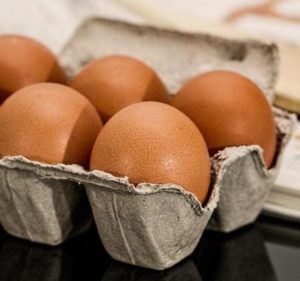
When eggs have been around a little too long, I’d let them sit at room temperature, in their shells, until they were definitely not edible. Then I carefully smashed them against tree trunks at deer-nose level, on the property’s periphery, but not close to where we or the neighbors spent any time. The nooks and crannies of the bark held onto the egg scent until it wore off. Rotten egg repellents often list “putrescent egg solids” on the label.
You can use up a bottle of deer solution in the same way—on tree bark, in the shrubs. It’s best to make a fresh batch from concentrate when the garden is due for another treatment.
And A Few More
Deer do not eat daffodils. Occasionally, I’ve taken a few leaves from the clumps, crushed them, and draped them around known favorites. It actually worked, short-term. If you look forward to beautiful spring color from bulbs, plant daffodils. Deer love tulips!
Many gardeners use Irish Spring soap, cut into chunks and hung in mesh bags at nose-level. They report good results using this method.
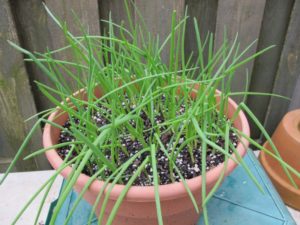
A pot of green onions.
Horticultural oil and fatty acids in insecticidal soap also deter deer. These insecticides are safe to use in the vegetable garden. Recently I used Bacillus thuringienis to kill caterpillars on the tomatoes, and the deer left them alone for several days until new netting was added.
Neither deer nor rabbits eat onions or green onions. Leave the discarded, older parts of green onion leaves in the garden and drape some of them in the tomato plant.
I also use shredded foxglove leaves among ornamental plants favored by deer. Foxglove (Digitalis purpurea) contains chemical compounds that can affect the heart, so I don’t use it around edibles. (***Update***: At my new home in rural NC, I placed torn foxglove leaves among emerging hostas and daylilies. So far, so good. 4/16/23)
Human hair can deter the animals for a short period of time. But I wouldn’t rush off to the nearest barbershop, because health regulations might prevent them from letting you take the clippings. But if you cut your kids’ hair…
Just because deer don’t eat a certain plant doesn’t mean they will avoid the garden altogether if that plant is growing there. It won’t drive them away. Many sources claim that gardens planted with marigolds repel deer, but I’ve never grown a marigold that wasn’t eaten by them! Maybe it will work differently in your garden.
Headings
Page 1: The Costs Add Up, Keep Your Distance, Changing Diets, Decades of Observation
Page 2: Deer Repellents (Sprays and Tablets, Repellex, More Spray Repellents, Devices, Granules, Barriers, Deer Netting, Gravel and Santolina, Got Milk?, Eggs, And A Few More)
Page 3: Plants That Deer Love (Hosta = Deer Bait), Plants Deer “Might Not Eat”, and What To Do
